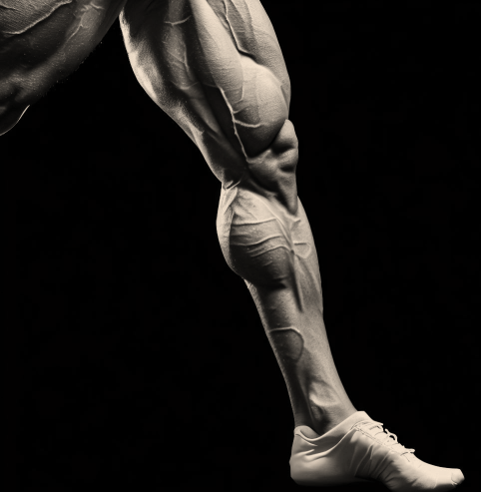The hamstring isn’t just a group of muscles located at the back of our thighs. It’s a powerhouse that plays a significant role in every step we take, each jump we make, and every sprint we run. The hamstring is often overlooked, and yet, without it, our mobility would be severely hampered.
Hamstrings: More Than Just a Back Leg Muscle
Importance in Movement The hamstrings play a vital role in both flexing the knee and extending the hip, essentially making movements such as running, walking, and jumping possible. They’re the silent heroes when you dash to catch that bus or nail the perfect jump shot in a basketball game.
Common Injuries and How to Avoid Them Hamstring injuries can be a real pain in the… well, leg. Strains and pulls are common, especially if you don’t warm up properly before engaging in physical activity. Prevention is better than cure, so always ensure you stretch and warm-up adequately.
Anatomy of Hamstrings
The hamstring is not a single muscle but a group of three muscles running down the back of your thigh.
Composition and Structure These three muscles – the semitendinosus, semimembranosus, and biceps femoris – work in tandem to allow for a wide range of movements. They start from the base of the pelvis and attach to the tibia.
Connection with Other Muscles Hamstrings don’t work in isolation. They’re intricately linked with the glutes, lower back, and calf muscles, ensuring smooth mobility.
Functions of the Hamstring
Every movement, whether subtle or explosive, relies on the hamstring in one way or another.
Role in Walking When walking, your hamstring contracts and relaxes with each step, allowing for a seamless gait.
Role in Running For sprinters, the hamstring is crucial. It provides the explosive power needed for short bursts of high-speed running.
Role in Jumping Ever wonder how basketball players achieve those high jumps? A well-trained hamstring is part of the answer.
Taking Care of Your Hamstrings
Prevention is always better than cure, especially regarding hamstring care.
Stretching Techniques Regularly practicing hamstring stretches can help in increasing flexibility, reducing the risk of injuries.
Importance of Proper Warm-up A good warm-up preps the hamstrings for the activities ahead, ensuring they’re flexible and ready.
Recognizing Signs of Strain Listening to your body is essential. If your hamstrings feel tight or sore, it might be time to give them a little rest.
Hamstring-related Myths
Misinformation can lead to unnecessary strain or injury.
“Only Athletes Need Strong Hamstrings” Wrong! Everyone, from office workers to stay-at-home parents, benefits from strong hamstrings. They’re pivotal for everyday tasks.
“Hamstring Exercises Are Only for Legs” Not true! While they primarily target the hamstrings, many exercises also engage other parts of the body, promoting overall fitness.
Deep Dive into Hamstring Injuries
Unfortunately, injuries can happen, but understanding them can speed up recovery.
Causes Overexertion, insufficient warm-up, or even poor footwear can lead to hamstring injuries.
Prevention and Rehabilitation Consistent stretching, strength training, and physiotherapy can be vital for both prevention and recovery.
Role of Hamstrings in Fitness
No fitness regimen is complete without hamstring exercises.
Best Exercises for Strength From deadlifts to hamstring curls, various exercises can strengthen this muscle group.
Connection with Core Training A strong core complements strong hamstrings, ensuring stability and reducing the risk of injuries.
FAQs
How often should I stretch my hamstrings?
Daily stretching can aid flexibility, but it’s essential to listen to your body and not overdo it.
Are hamstring injuries permanent?
Most hamstring injuries heal with proper care and rehabilitation. However, severe cases might require longer recovery or even medical intervention.
Can I train other body parts if I injure my hamstring?
Yes, but it’s crucial to avoid putting strain on the injured hamstring. Opt for low-impact exercises and always consult with a fitness professional.
Do hamstrings play a role in posture?
Absolutely! Strong hamstrings support a good posture by aligning the pelvis and supporting the spine.
How can I strengthen my hamstrings without going to the gym?
Bodyweight exercises, like glute bridges and single-leg deadlifts, can be effective. Resistance bands can also be a great addition to home workouts.
Why are my hamstrings always tight?
Factors like prolonged sitting, inadequate stretching, or even muscle imbalances can lead to tight hamstrings. Regular stretching and exercises can help alleviate this tightness.
In conclusion, the hamstrings are a crucial part of our musculoskeletal system, impacting our daily movements and overall quality of life. By understanding and taking care of them, we pave the way for better mobility, reduced risk of injuries, and improved physical well-being.
For a deeper understanding of the intricacies of leg muscles and their functions, explore our comprehensive articles in the anatomy category.

